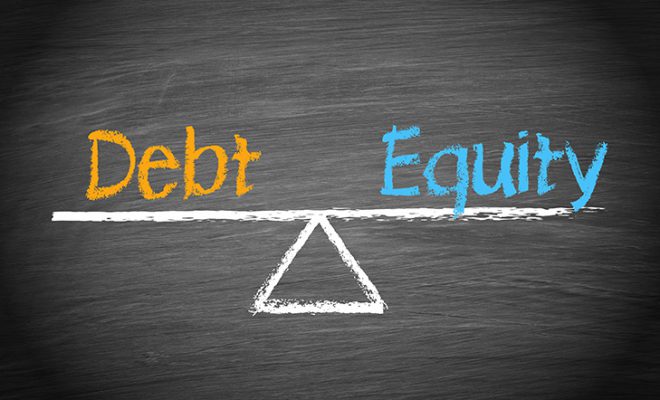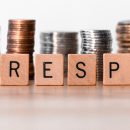Things To Know About The Paycheck Protection Program
The impact of the COVID-19 crisis has been drastic all around the world. The pandemic shrunk markets and caused considerable loss to the overall economy. The major impact of the novel coronavirus situation has been on small and medium scale businesses. Without a solid foundation, these units have struggled to stay afloat in these times. Consequently, jobs have been cut, and operations have been condensed to sail through this difficult phase effectively. As per a recent report from the Labor Department, U.S. employers have reduced nearly 30 million jobs due to the coronavirus pandemic situation. However, to help employers keep businesses alive and not remove people from their payrolls, the Government has introduced the Paycheck Protection Program.
Here is all you need to know about the Paycheck Protection Program (PPP):
Table of Contents
What is PPP?
To provide direct economic assistance to Americans, the Government launched the Coronavirus Aid, Relief, and Economic Security (CARES) Act in March 2020. Under this act, the Government pledged more than $2 trillion as an economic relief package to protect Americans from the negative health and economic impacts of COVID-19. A very critical part of the economic stimulus is small business support, which constitutes the Paycheck Protection Program (PPP). The PPP created by the CARES Act is directed by the Small Business Administration (SBA) in assistance with the Department of Treasury.
The CARES Act has allocated $349 billion to the SBA. This monetary help will be provided to businesses in the form of loans in return for their guarantee to keep employees on for at least eight weeks of payroll. 60% of the loan amount is to be used for payroll, while 40% is to be used for other expenses such as rent, mortgage interest, and utilities. If the loans are utilized as directed by the CARES Act, the SBA will forgive 100% of the amount (convert it to a tax-free grant).
PPP has been specifically put in place to offer direct support to small businesses, encouraging them not to minimize their payrolls and protect jobs. It does not require the borrower to pledge any security/collateral or pay any fee. However, all loans have a 1% interest. The loan is subject to a maximum of $10 million or 2.5 times of the monthly payroll, whichever is lower. Additionally, loan payments are deferred for 6 months. For loans issued before June 5, the maturity is 2 years, while for those issued post that, the maturity is 5 years.
Who can apply for PPP?
A small business owner can apply for the PPP through an SBA approved lender. However, before applying for the loan, one must check the eligibility. Only the following categories that have been impacted by the COVID-19 situation can apply for PPP:
- Small business units that meet the size requirement of SBA – industry or any other size standard.
- Employers that can provide proof of the negative impact of the COVID-19 situation on the business.
- Businesses that are classified as non-profit organizations, veteran organizations, or tribal concerns. However, these should either have 500 or fewer employees or meet the SBA industry size standard, if there are more than 500 employees.
- Businesses categorized under ‘Accommodations and Food Services’, which have 500 or fewer employees per location.
- Others registered as sole proprietors, independent contractors, and self-employed individuals.
The Application Process for PPP?
A business can apply for PPP via any of the authorized SBA 7(a) lenders. Each state has a participating lender, who can be approached for the loan. Moreover, the application can also be made through the registered federally insured depositories, federally insured credit unions, or Farm Credit System institutions. One can find the authorized lender for their state by using the lender search tool.
Once the lender is selected, the rest of the procedure is simple. The employer needs to download the PPP borrower application form and fill in the following details:
- Legal name, address, phone, etc. of the business
- Average monthly payroll
- Number of employees
- Purpose of the loan
- List of all owners that hold 20% or more of equity in the business
The form includes a few questions too that have to be answered carefully and truthfully. Moreover, it will demand several proofs such as the existence of the business as on Feb 15, 2020, with the stated employees, payroll expenses, etc. Keeping financial documents such as payroll processor records, tax filings, tax forms of 2019, Form 1099-MISC, etc. handy while applying can quicken the process and avoid delays. The last date for submitting the loan application was June 30, 2020.
How does PPP forgiveness work?
As per the rules, the SBA will forgive 100% of the loan, provided there is a valid proof that 60% of the money was used for payroll and 40% for other permissible purposes. That said, forgiveness is dependent on how effectively the employer can sustain or rehire employees, as well as uphold the salary levels. The amount of loan forgiven will be reduced in case the full-time employee number goes below the mentioned figure. The forgiveness will also be lessened if the salaries or wages of the employees are reduced than the stated amount. In case, the employee count reduces, the employer can still claim for full forgiveness, provided the employees were rehired within 24 weeks of the receipt of the loan or by December 31, 2020, whichever is earlier. However, if the employee rejects the re-employment offer, the employer can exclude the concerned person from the count. For this purpose, the following conditions must be fulfilled:
- A written offer, in good faith, must have been made to the employee for rejoining.
- The offer must have been made to employ the person at the same wage or salary or for the same work hours.
- The employer must provide official documentation of the employee’s rejection.
To apply for loan forgiveness, the employer needs to fill the Loan Forgiveness Application form. The debt will only be waived by the end of the 24 weeks from the date of the issue of the loan.
What are the eligible costs?
As stated, only payroll and some other authorized expenses are eligible as costs for loan forgiveness. These can be defined as:
- Payroll includes salaries, wages, commissions, and bonuses up to 100K per employee. It also comprises advantages such as medical, sick, parental, family, and vacation leave. Several health benefits, hazard pays, state and local taxes on compensation, etc. are also included.
- For sole proprietors, wages, commissions, earnings, or individual income up to $100K is permissible.
- For seasonal operations, the loan can cover average monthly payroll from Feb 15, 2020, to June 30, 2020, up to $100K.
- For new ventures, average monthly payrolls beginning Jan 1, 2020, to Feb 29, 2020, up to $100K.
- For mortgages, rent, and utilities, the contract must have been effective before Feb 15, 2020.
All business owners will need to be very cautious in maintaining exact and truthful records of expenses. The proofs will be required at the time of applying for loan forgiveness.
To sum it up
In the wake of the global pandemic, the Government has been making increasing efforts to minimize the negative impacts. The economic stimulus offered to small businesses in the form of PPP is a commendable initiative, which is helping many survive these demanding times. However, it is important to be careful while applying for the loan, using the amount, and seeking forgiveness.
Getting guidance from professional financial advisors can also help to ensure that you are on the right path.















